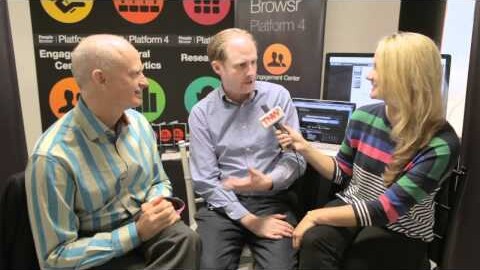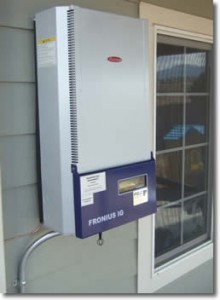
Some around the 8th heavy storm of this spring, it occurred to me that I’m woefully unprepared for power outages in this area. As someone who makes their living off the ability to have always-available power, that thought worried me somewhat. It’s not at all uncommon to have storms, floods and the like that bring power down in this area for days on end. Add to that fact the rising energy costs worldwide and I realized that I needed to start thinking up some alternatives.
For many parts of the world, and Nashville, Tennessee included, solar is likely the most viable option. Though wind farming is a great way to go “off the grid”, stories-tall windmills aren’t exactly convenient nor do they make my local HOA very happy. I’d heard stories about parts of the world that use solar very efficiently (in Israel, for instance, it’s very common to have solar-heated water) and so I started doing some digging into the viability of solar systems to at least keep a minimally-viable workspace.

Grid or No Grid?
To start, you need to get an idea of what sort of system you’re wanting. At the very least, you should be aware that there are two types:
Off-Grid: These systems are designed to provide you with 100% of your power needs. They store power in batteries for dark hours and ideally will allow you to remove yourself from the municipal power system (and monthly electric bill).
 Grid-Tie: A grid-tie system is one that is intended to connect to your municipal power. Depending on its size, it can either simply supplement your existing power lines, or it can even (in some cases) send unused power back onto the grid. With a participating provider, you can get paid back for producing power that can be used in other homes.
Grid-Tie: A grid-tie system is one that is intended to connect to your municipal power. Depending on its size, it can either simply supplement your existing power lines, or it can even (in some cases) send unused power back onto the grid. With a participating provider, you can get paid back for producing power that can be used in other homes.
Off-Grid (OG) systems tend to be more popular with the groups of people who are either building a new residence or simply want to be removed from a monthly bill. However, as you would expect, these systems can be wildly expensive. In what I found, my modest $90-per-month electric bill would require a system that cost in excess of $25,000 in order to take me completely off grid. In case you haven’t noticed, I’m a blogger and business consultant. In other words, I’m not the type of person to have $25k just laying around.
Obviously then I was left with the idea of a Grid-Tie (GT) system. I thought that I’d be quite happy with something that could reduce my monthly bill by 20 or 30 percent, and I found this to be a considerably more reasonably-priced option. In order to do this, I was looking at somewhere around a $10,000 investment, and it was entirely possible that I’d even make some of that back in low-use times by feeding back into the system.
Clearly your milage may vary. What is right for me in this instance is not necessarily what is going to be right for you. As such, you’ll need to do more reading and homework than what I’m putting into this piece to find out exactly the right solution for your home.
But Wait!
Then a phone call with a solar installer got me thinking. I told him the premise behind my idea (remember, this wasn’t as much about saving money as it was about being able to continue working) and he had another suggestion entirely — Go off-grid, but don’t do it for your entire house.
By our estimation, roughly 30 percent of our electricity use is taken up by the computers and electronic devices that are in this office. What’s more, if things got a bit hairy for a few days, this office is big enough to be a comfortable living space. It has good ventilation, a fireplace, fans and plenty of room for a couch or two. It can be closed off from the rest of the house, keeping it cooler or warmer as necessary. With the simple process of switching around a couple of wires in my basement, I could take this room entirely off the grid. Adding in a switching box would allow me to take it back on the grid with the flip of a lever, should something go wrong with the solar system.
Maybe you’re not in such a position. It’s worth noting, though, that many solar systems can be non-permanent and require very little room inside of your house for the storage and inversion of electricity. As such, even if you don’t have a room that you can completely wire for solar, you might have an area that could provide at least some power for emergencies without being in violation of an HOA, a lease or other such agreement.
On The Move
All of this talk about alternative power got me thinking about what I could do when I was out and about. I’ve seen solar-equipped bags before, but I wasn’t sure that the cost was really worth doing. While I’m still not completely sold on the idea, they’re at least worth mentioning.
Makers such as Voltaic specialize in quality bags with flexible, durable solar systems installed. From backpacks to messenger bags and every size in between, these bags provide enough power to fully charge a mobile phone after only 3 or 4 hours of direct sunlight. Granted, you’re not going to power your gaming computer with one of them, but they’d probably work well for lower-power computers such as a MacBook Air or many netbook devices.
Voltaic touts the ability to charge a Hypermac battery with its traditional panels. Since these batteries are now back on the market after a fight with Apple over the Magsafe adapter, it’s a viable option for Apple owners.
There are more traditional looking bags, as well, if you’re so inclined. Samsonite makes a model that is intended to charge small devices, and it’s available across the internet for less than $150. Noon Solar makes a rather handsome leather bag (above) that any self-respecting professional geek would be proud to carry. Sadly, it’s quite pricey at almost $450.
What You Need
To start, you’ll need to make sure that you have optimal sunlight. Obviously this is critical. Most places that I’ve spoken with and things that I’ve read state that you should have a minimum 5-6 hours of direct sunlight in a South-facing location in order to viably go off the grid with any part of your home. For grid-tie systems, the demands are not as heavy, but you’ll have better performance with greater sunlight.
If you want to get an idea of what your ideal system would cost, Affordable Solar has a handy calculator. Though you should be forewarned that it’s directed toward US residents as it has a US map for direct sun hours and the calculator works in dollars.
As is typical with many electronics, you’ll get better performance the more that you spend. The price-per-watt ratio goes down dramatically with each kilowatt increment that you buy, however the total cost also increases greatly. For my home, for instance, it was recommended that we do a 6.5 kW kit, which would cost between $24k and $29k depending on the manufacturer.
It all comes down to homework. Start with Wikipedia to get a broad overview of how solar systems work and what some viable options are for using them. From there, I suggest reading through the different systems that appear on Solar Home.
As I said above, the Affordable Solar calculator is a great resource, but you’ll need to have a general idea of how much power you use. Finally, find a licensed (if applicable in your part of the world), reputable installer to talk to about what you’re trying to accomplish. The things that my eyes were opened to were pretty amazing and it’s really gotten me thinking of some other ideas that I can implement in other parts of my life.
You don’t need to be into the green tech movement (heck, I’m not) or classify yourself as hugely paranoid in order to get benefits from going solar. Constant power, lower bills and the geek factor are all pretty big reasons for me. You’ll have to decide what your reasons are, but hopefully this helps you get some ideas.
Get the TNW newsletter
Get the most important tech news in your inbox each week.






